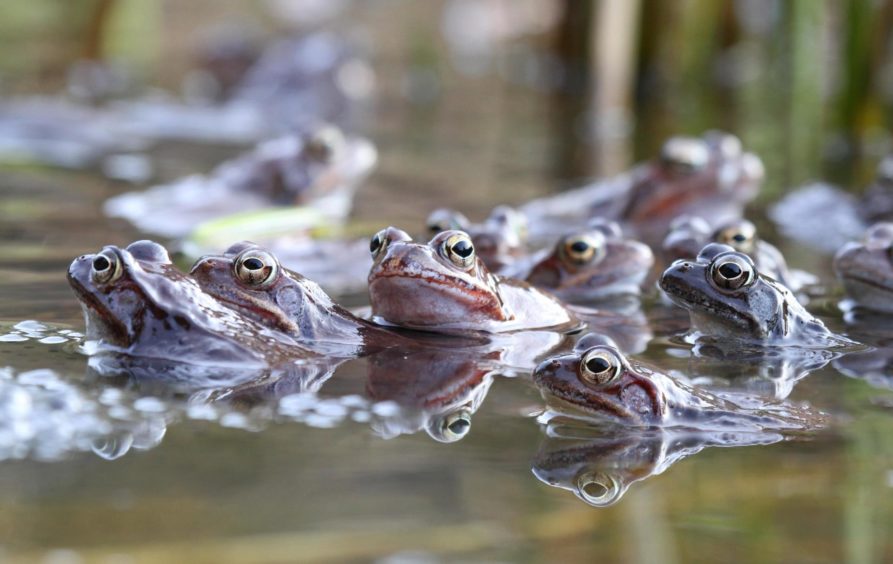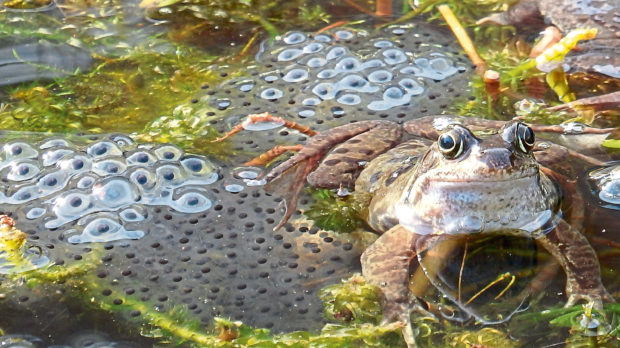Early spring is always an exciting time in the wildlife calendar because the countryside is on the cusp of change – and one of the biggest heralds of such transformation are spawning frogs.
Each year in early March, I embark upon a pilgrimage down to the haugh of my local river in search of frogs as they congregate among its scattering of small pools and natural ponds.
One encounter from last year still grips firmly upon my mind. On the approach to a likely looking pool, I stooped down onto my hands and knees and slowly crawled across the muddy ground towards the water’s edge so as not to alarm any spawning frogs. When a few feet away, I could see a small shiny protrusion above the limey-green surface film of floating duckweed – a frog’s head.
Frogs are typically wary creatures, especially during the day, and one sudden movement on my part would send this little creature swirling down to the bottom of the pool. So, with a bit more cautious pulling of the arms and pushing of the legs, I slithered to the fringe of the pond. The beady eyes of the frog glared at me and I stared back. It soon decided I represented no danger and began to gently croak.
In frog-speak, these croaks were probably a thing of great musical beauty, and even to the human ear they have an appealing resonance. The frog’s pale throat-patch quivered in croaking contentment, and then another head popped up. The croaking turned into an amphibian harmony, a real-life version of the frog chorus.

It is hard to describe the wave of happiness that swept upon me as I lay spread-eagled on the ground right next to this duo of croaking frogs. The power of nature to relax and destress the mind is inestimable. Nature is a great soother, a miraculous medicine that lies in boundless quantities on our very doorsteps.
The timing of frog-spawning has always been of great interest to me because it is an indicator of our changing climate. As a boy, back in the 1970s, it was in the middle of March when I would find the first spawn. Now it can be as early as the end of February. That shift in days might not seem much, but in nature terms it is gargantuan.
Geography is a major dictator of spawning times and on the high ground of the Cairngorms, as well as in the hills above mid-Deeside, I have come across fresh frog spawn in mountain pools in late April, as well as palmate newt tadpoles that had not even metamorphosed into adults in their first year and were taking a second summer to finish the job.
Finding frog spawn invariably brings a good dose of nostalgia coursing through my veins, for it is one of the keystones of my childhood and a wonderful reminder of my first early connections with nature.
Info
Frogs hibernate in winter, emerging in late winter or early spring to spawn. Each female can lay up to 4,000 eggs, although few tadpoles make it to adulthood because of a multitude of dangers.










